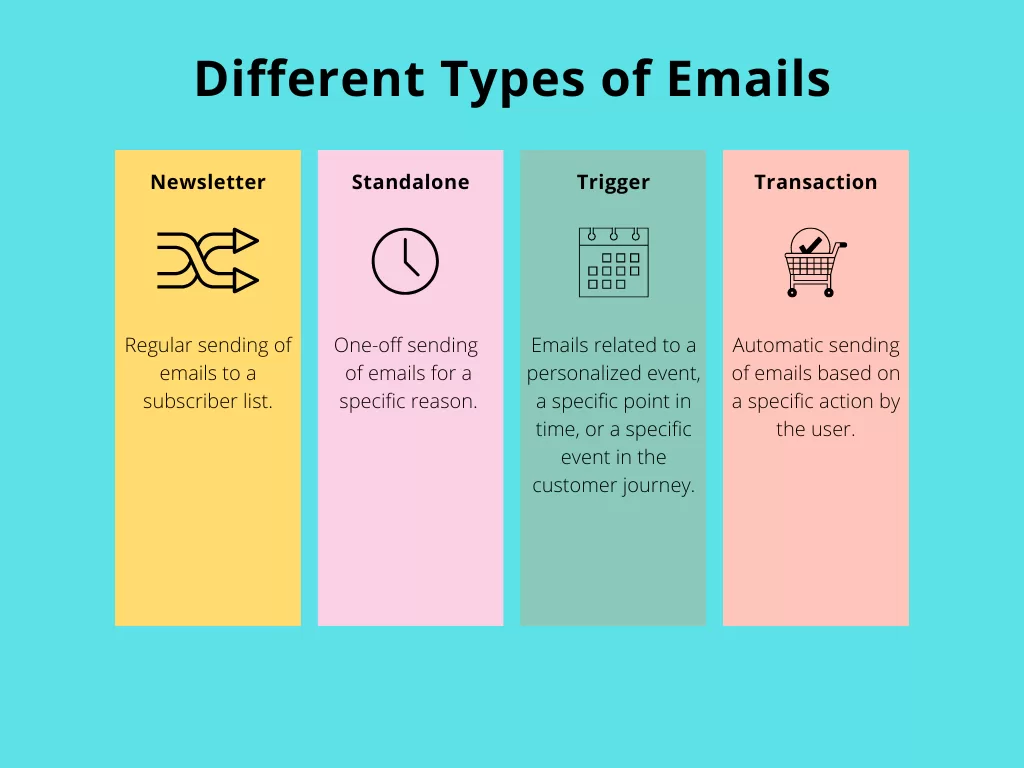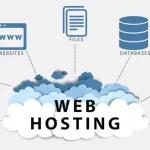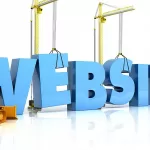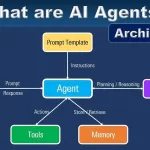We explain everything about email: its history, types, advantages, and disadvantages. We also explain the parts of an email.What is email?
Electronic mail or e-mail (taken from the English electronic mail ) is a means of digital written communication , similar to the letters and postcards of the postal mail of yesteryear, which takes advantage of the multimedia technology of the Internet for the delayed sending of messages of varying length and with or without attachments, between two or more different interlocutors.
Email was long the standard form of communication among Internet users . Even today, it plays a prominent role, especially when transmitting additional information (attachments of various types) that doesn’t require immediate attention.
In this last aspect, email is distinguished from instant messaging and other 2.0 telecommunications, which prioritize immediacy and simultaneity. It’s worth noting that the term is used to describe both the medium and the message itself; this is why we often say ” we will send an email .”
Although emails have been relegated to the workplace and corporate spheres in recent years, it is estimated that around 144 billion emails are sent every day worldwide .
History of email
The most important antecedent of what we understand today as email arose in 1962, with the IBM 7090 computer , which allowed interaction between different users from remote terminals, who could exchange messages.
However, in 1965 the MAIL service emerged, the true precursor of email , which allowed the sending and receiving of messages between users of this computer.
Ray Tomlinson was the creator of modern email . He created the first experimental protocol for exchanging information between machines connected to the same network: CYPNET. He was also the one who introduced the at sign (@) as a demarcation symbol to distinguish between the username and the service name in email addresses .
With the arrival and widespread use of the Internet, email naturally became a popular and everyday tool. It was first offered free of charge in 1971, and by 1977 it was the standard information-sharing mechanism worldwide in online communities .
Types of email
Email generally works the same regardless of its specific purpose. However, depending on its use, we can talk about:
- Personal email. Those maintained by individuals and served by their particular interests, that is, for private and personal use. A single person can have multiple personal email addresses and use them as they see fit.
- Corporate email . Email serves as a written link between the various departments or segments of a company , corporation, or organization , and is generally accessible only from workstations, corporate cell phones, or through the use of a password that guarantees the confidentiality of the information handled.
- Institutional email. Emails representing the entirety of a company, organization, or institution of any kind, serving as a communication bridge between the organization and its clientele —that is, between the inside and outside of the organization.
How does email work?
In principle, email works very similarly to postal mail , which is why it uses the latter as a reference for its operation. This extends from the names of things (messages are considered “letters” and are often represented as envelopes; inboxes are called “mailboxes,” etc.) to how they work.
The latter, on the other hand, couldn’t be simpler: User A writes a message to User B telling them something. If desired, they can also include some relevant photos, audio, or video files from their computer .
Moments later, User B’s email address receives the letter and, eventually, reads it and downloads the photos to his or her own computer. He or she can then write a reply to User A, sharing his or her impressions and, if desired, send any attachments he or she deems appropriate. This process can be repeated as many times as desired, and does not necessarily follow strict round-robin procedures.
Parts of an email
Typically, an email consists of:
- Inbox. The virtual space where received messages are stored, in chronological or personalized order, either general or organized into folders.
- Outbox. Similarly, messages waiting to be sent remain in this virtual space before being classified as “sent.”
- Sent folder. This contains a history of sent letters and documents, organized chronologically.
- Spam . This is the name given to unwanted email, usually containing misleading advertising or promotions, that often filters out “legal” email content.
- Recipient. The email address of the person to whom the email will be sent.
- Subject. Space for a brief description of the message’s content, as an introduction, which the recipient can read without having to fully open the email.
- Message body. The written information you wish to convey.
- Attachments. Additional data you wish to transmit along with the message, as attachments.
- CC/BCC. Acronym for Carbon Copy and Blind Carbon Copy , they allow the sender to also send an identical copy to a third user, either visible to everyone (cc) or invisible (bcc).
Advantages of email
The advantages of email over other written communication formats are:
- Speed. Data is transmitted almost immediately, and the risk of information loss is minimal.
- Security . This is a hotly debated topic (generally, internet privacy), but email providers generally use strong encryption mechanisms to protect their users’ data from third parties and information thieves.
- Attachments. While there are computer limits on the size of computer attachments that can be included in an email, they are often large enough to send most personal documents you want to share.
- Versatility. Our email address can be used however we wish, within a certain framework of legal and procedural regulations.
- Low cost. Almost all email services today are completely free.
- Eco-friendly . It doesn’t use real paper and therefore produces no waste or consumes physical resources (beyond the electricity needed for Internet access).
- Global. We can check our email anywhere in the world, and send and receive messages from anyone anywhere.
Disadvantages of email
Email, on the other hand, has the following disadvantages compared to other messaging modes:
You need an electronic device. To access email, you must have a computer , smartphone, or tablet, which also means having power.
Lack of interactivity. Unlike chats and instant messaging services, emails must be read one at a time.
It’s relatively vulnerable. Email is a source of evidence that hackers and computer viruses can eventually access, creating trap emails and other forms of deception to gain access to unwary users’ information.
Requires internet access. In conditions with poor connectivity or in countries with low internet penetration, email is not a good option.
Email Marketing: Definition, Benefits, and Tools
No matter who your target audience is, email marketing is likely part of your overall marketing strategy.
But, given that more and more people are getting information and interacting with posts on social media, and some people are automatically deleting things in their “promotions” folder, is email marketing really worth it in the 21st century ?
The short answer is yes! Read on to learn why email marketing should remain part of your marketing plan.
What is email marketing?
Simply put, email marketing can be defined as any email communication sent to a potential customer with the intention of converting them into a sale. But as a marketer, it’s better to think of email marketing as a personalized communication flow that builds a relationship of trust between you, your brand, and your contact.
How does email marketing work?
There are two main types of email marketing: inbound and outbound. Inbound is generally used by B2C brands, while outbound is typically used by B2B companies.
We’ll focus primarily on inbound marketing, but what you need to know about outbound marketing is that it’s often used for email content marketing to engage with other businesses for collaboration and backlinks.
Otherwise, when starting out with email marketing , you first need to gain email subscribers . Then, you create email marketing campaigns targeting the type of people who have signed up to receive your emails.
After some A/B testing for your email marketing campaigns , you should start to get a feel for what works with your particular clientele and be able to craft messages that best fit your goals.
But is email marketing worth it in a world where there are so many other options? Let’s look at some benefits.
Benefits of email marketing
Email marketing is just one of many channels that can be used in a digital marketing strategy, but it’s potentially the most effective. Some of the benefits of using email marketing include:
- Email has an average ROI of $44 for every $1 spent.
- Nearly all Americans check their email at least once a day, and many Millennials and Gen Z-ers prefer email marketing over other types.
- Email is accessible: Customers don’t need to leave home or be tech-savvy to interact with your marketing materials.
- Nearly one-third of Americans recently visited a company’s store or website after receiving an email. This may seem small, but remember: they probably wouldn’t have shown up without the email.
Email marketing best practices and strategies
If you want your email marketing campaign to be successful, you should set yourself up for success by following email marketing tips regarding best practices and strategies.
Ask before sending an email
Have you ever received an email and, when you unsubscribed, had to select “I never signed up to receive these messages?” It’s so annoying and feels invasive. Users may wonder, “How did they get your email address? What other information do they have? Why should I trust this company?”
So, if you want your email campaign to be successful , ask for permission before sending that first email.
Even if your current email list is small, never, ever buy a mailing list . Also, if you ask them to “enter their email address for 20% off their first purchase” or similar, make it very clear that you’re signing them up for another ad or subscription.
Personalize your messaging
Personalize emails to your subscribers. Forbes compiled a great list of statistics regarding personalization expectations, both for email and other parts of your brand (such as product recommendations on your website). Some highlights include :
- 70% of Millennials are tired of companies sending irrelevant emails
- 71% of all consumers consider personalization before reading or even opening brand emails.
- Some marketers claim that personalized emails have generated an increase in revenue of up to 760%.
- Brands report that conversions have improved by up to 202% when they use personalized calls to action in emails.
With email marketing automation , you can track your contacts’ email and website behavior to create relevant messages for them. This allows you to segment your lists so you can send only useful emails to certain groups of people.
Another way to ensure your message is personalized is with an Email Drip Campaign , which sends emails only when triggered by specific events.
Be aware of how often you send emails
Too often, marketers execute invasive and ineffective email blasts. One of the 10 Commandments of email marketing is “You’ll remember that ‘timing is everything’” for good reason: customers want to hear from you, but they don’t want to hear from you constantly.
While it may seem counterintuitive, fewer emails often mean greater engagement . So, less really is more!
Don’t waste anyone’s time
Keep your messages short and to the point. The number of consumers using mobile devices is growing, and more than half of email opens now occur on a mobile device. Therefore, your best way to communicate is through concise, conversational, and relevant messages.
Look at your metrics
If you’re not tracking your email marketing KPIs , you won’t know how effective your email marketing strategy was. Fortunately, many email marketing packages and platforms offer reporting capabilities, so you’ll know what’s working and eliminate what isn’t.
Email Marketing History and Trends
These days it’s hard to imagine life without email, but email marketing has a history that continues to evolve.
In 1971, Ray Tomlinson sent the first email. So what did the message say about this historic leap in communication? Tomlinson says it was “something like QWERTYUIOP.”
Seven years later, Gary Thuerk, marketing manager at Digital Equipment Corp., sent the first mass email promoting DEC machines to 400 users via the Arpanet. The promotional email worked, generating $13 million in sales.
In the early 2000s, spam was becoming a huge problem. Then, in 2003, President George W. Bush signed the CAN-SPAM Act as part of a national effort to combat the flood of unsolicited emails.
Marketers knew they needed to fine-tune their email marketing strategies if they wanted to reach their audiences.
Then came 2020. A lot happened that year, but let’s talk about the email marketing renaissance. Permission-based marketing, also known as inbound marketing, changed the way marketers and consumers engage with each other.
Email plays an important role in the inbound buyer journey. By staying in touch with interested prospects through the right types of emails , you can help build relationships and move leads closer to conversions.
Looking ahead: trends in email marketing automation
In addition to the growth already experienced, there are also new trends to consider.
Email loyalty programs
Loyalty programs will play a larger role in email marketing automation. These programs allow marketers to take a closer look at their customer data. This information will allow marketers to better understand their customers’ wants and needs and how they respond to certain campaigns.
Image-rich email
To capture mobile users’ interest, image-rich emails will play a larger role in email marketing. Marketers can use images to create behind-the-scenes shots, sneak peeks at new product launches, and story-based images to capture their potential customer’s attention. Images must be impactful enough to be shared, as social media is likely to continue to dominate many consumers’ lives.
Email and artificial intelligence
Expect AI to play a much larger role in email marketing. In addition to its benefits for email marketing automation, AI will enable greater personalization, optimization, reporting, segmentation, and content automation, resulting in faster and more effective marketing campaigns.
How to Choose an Email Marketing Agency
Questions to ask before investing in an email marketing automation platform :
Will my email list management be better?
Does it include time-saving templates and analytics?
Do you have entry/exit options?
Does it comply with the latest global regulations?
Is it mobile friendly?






